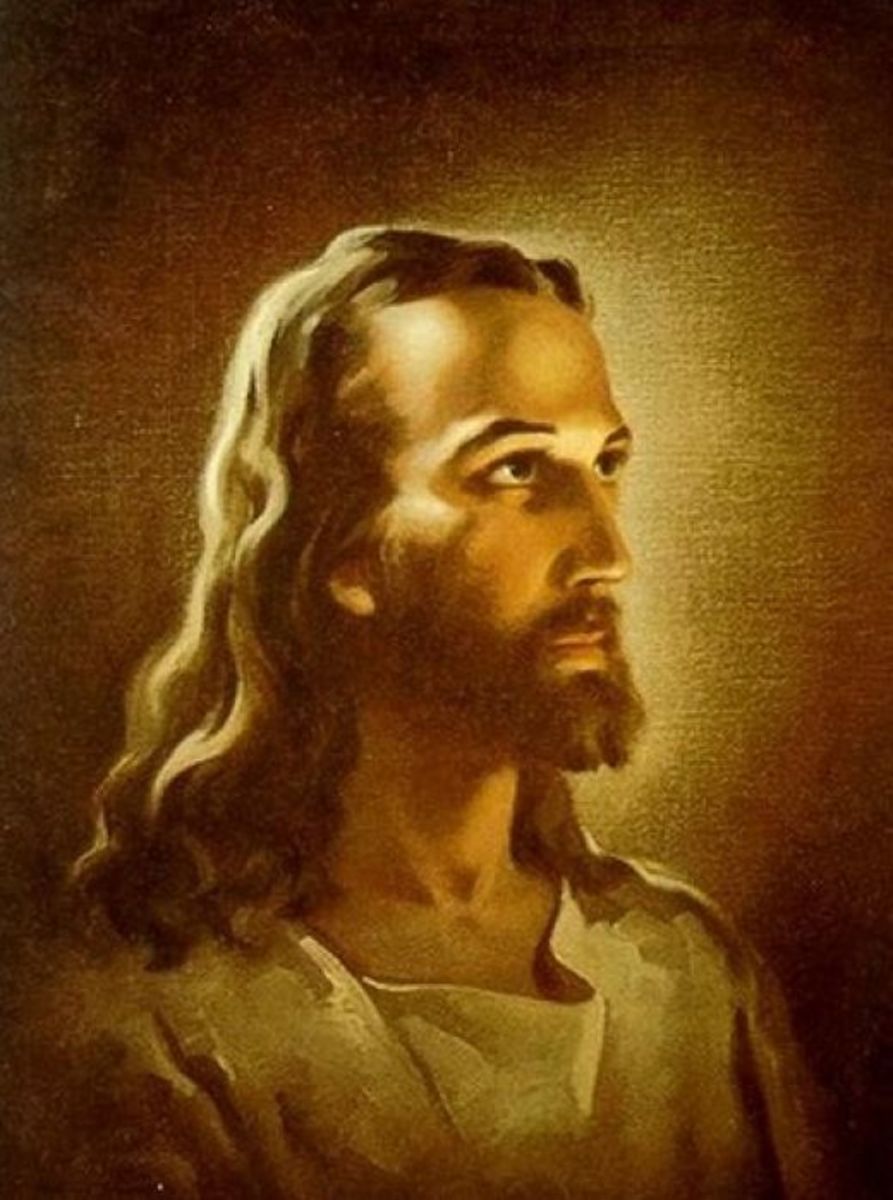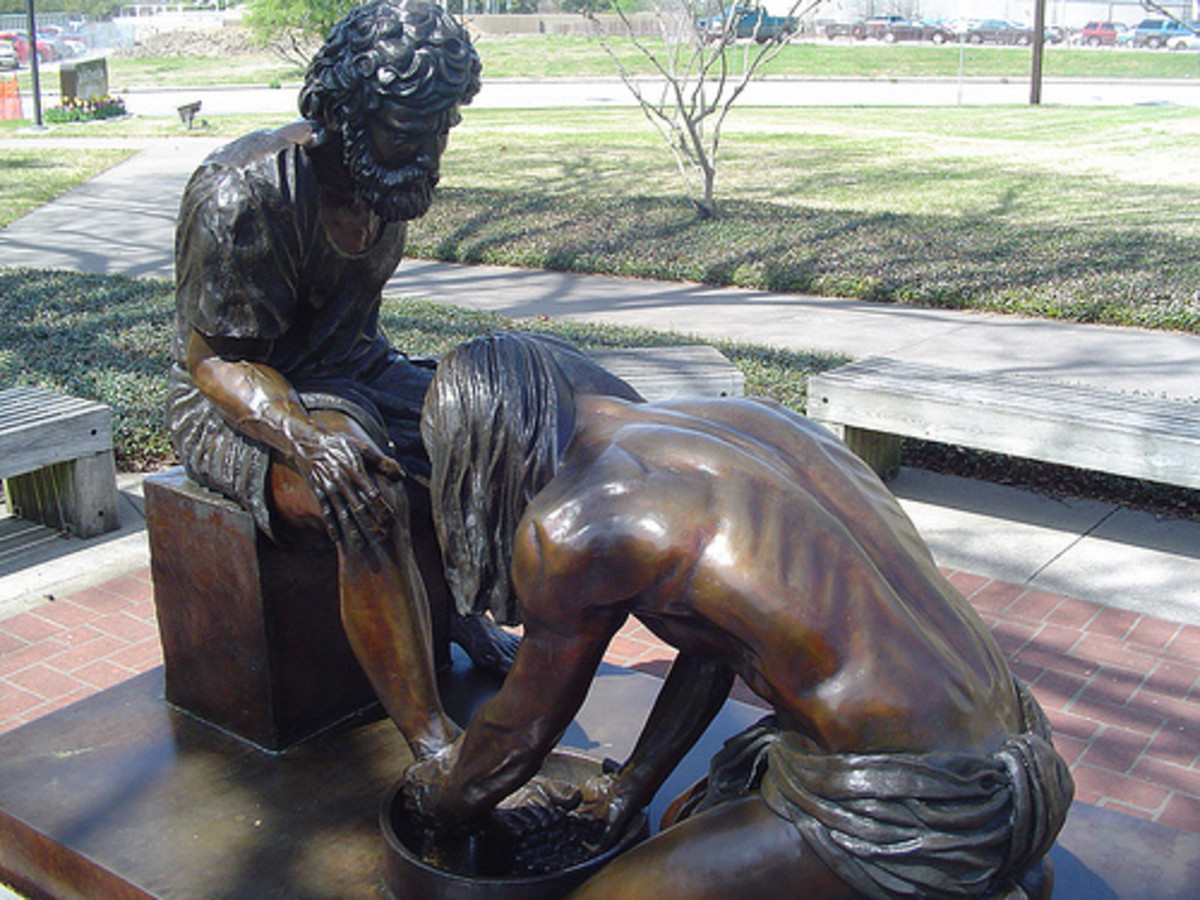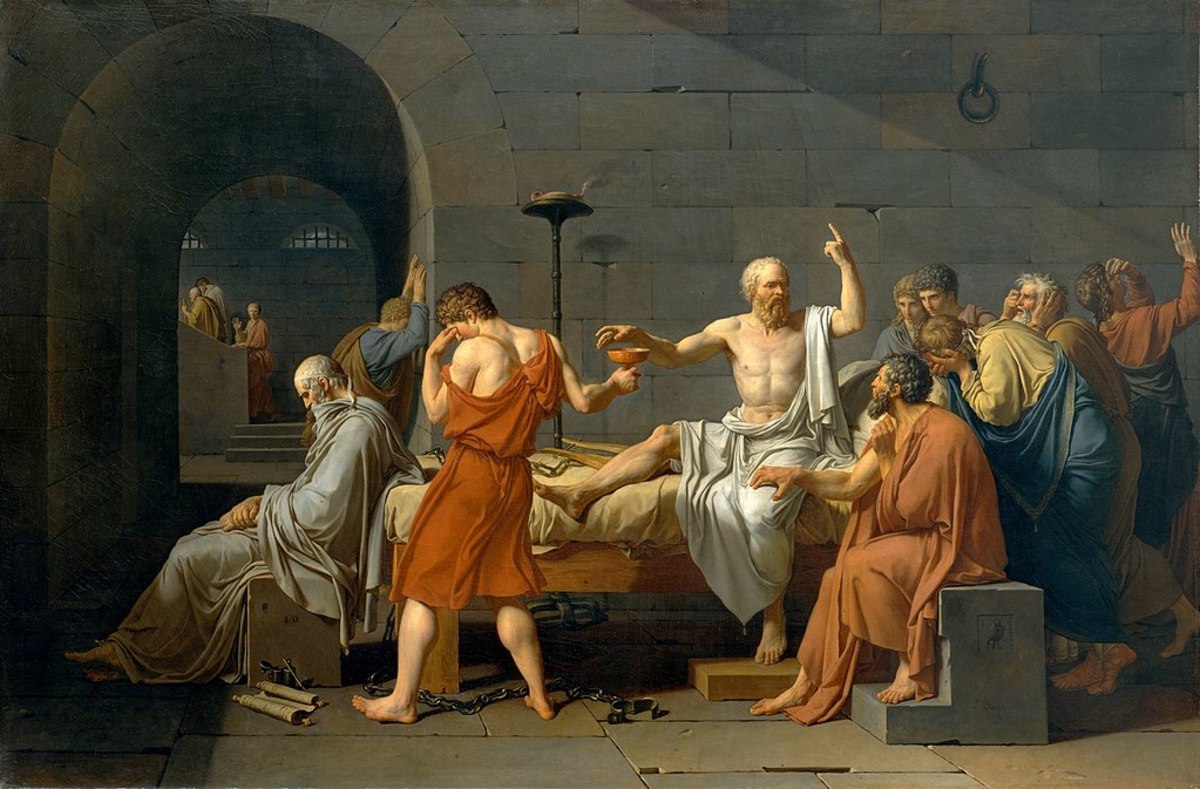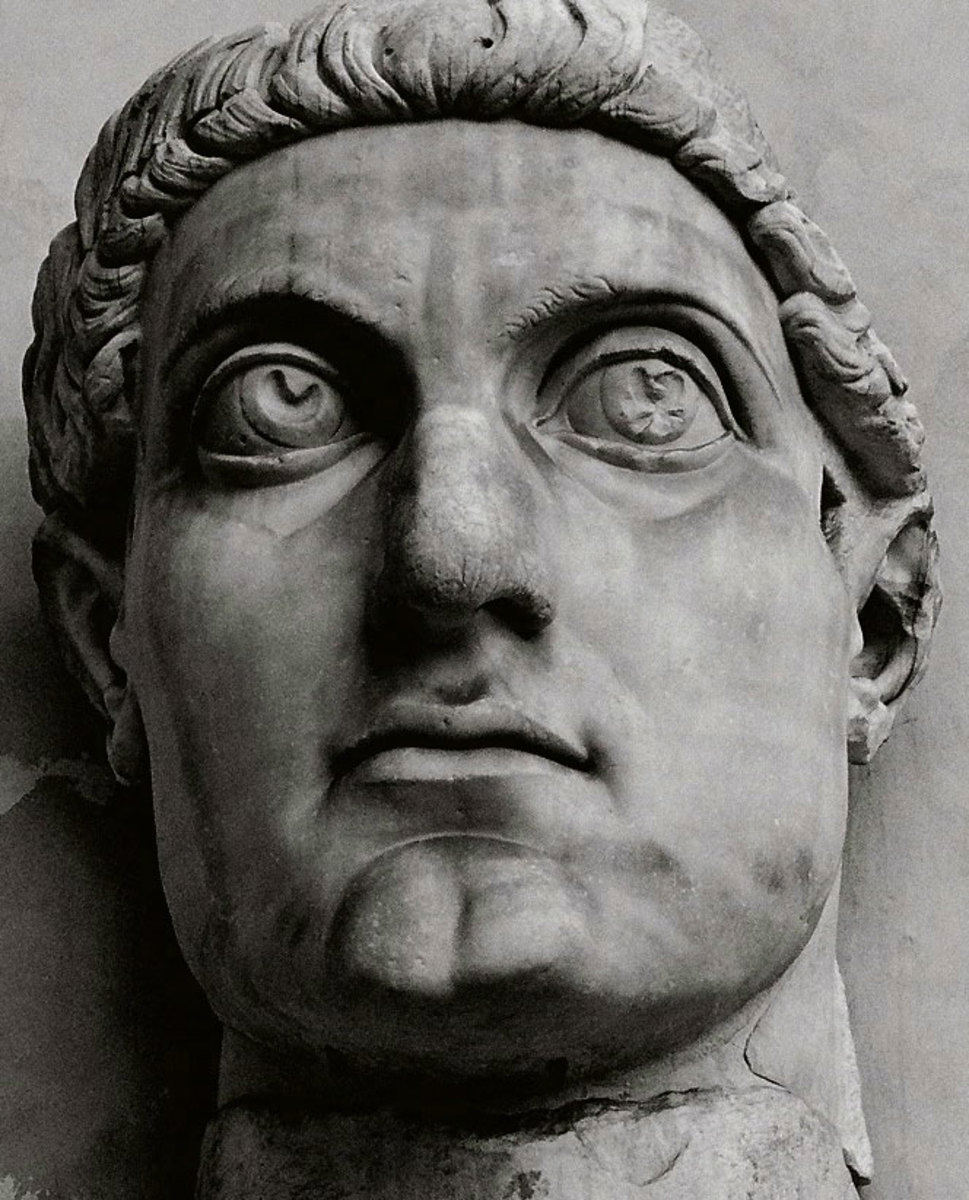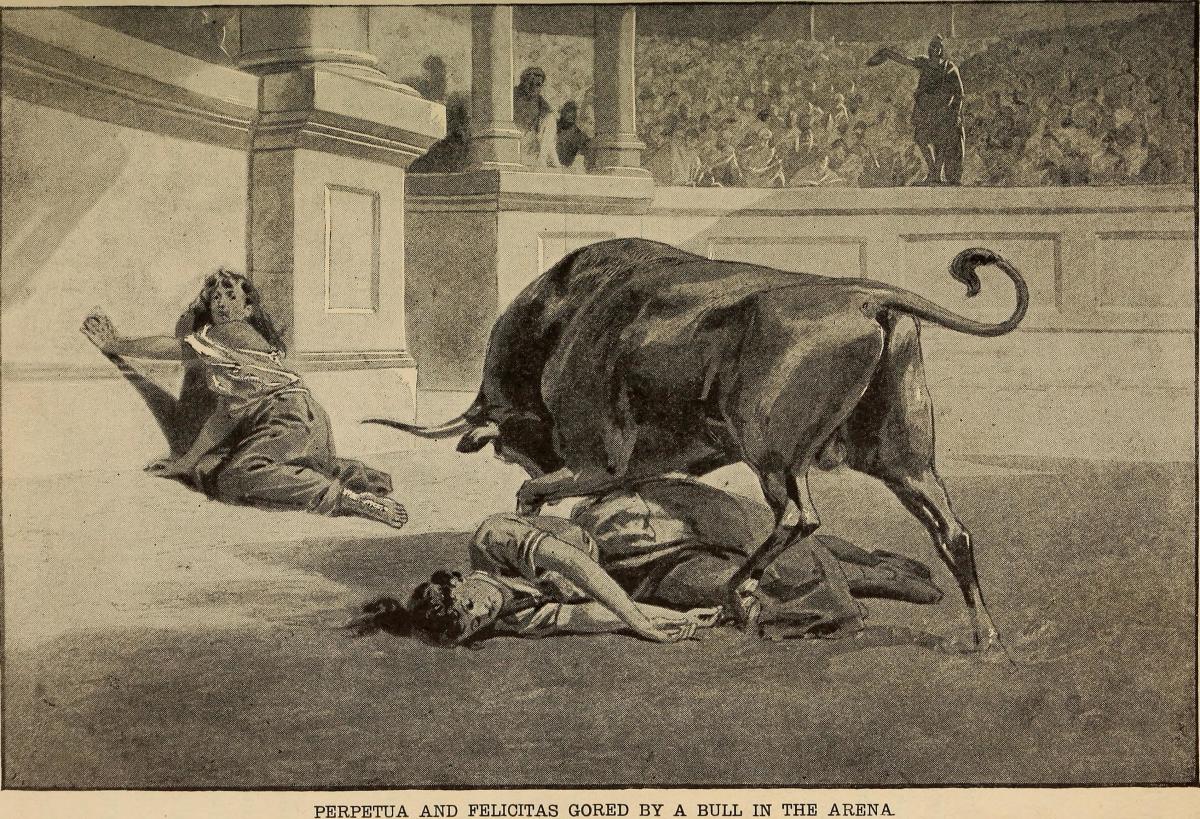Conflict Is Built Right Into The Heart of Christian Theology

The Heart Of Christian Theology
© 2005 VVeasey Publishing
01.05.2013
Conflict is built right into the core of Christian theology. There’s always a light force (God) opposing a dark force (the devil), conflicting and vying for supremacy with one another in Christian theology. The light force is considered superior to the dark force and Christian theology’s supreme belief is the eventual supremacy of the light force over the dark force.Of foremost importance to the adherents of this theology is their identification with the light force and the waging of a holy war, actual or verbally against those they identify with the dark force.
This dichotomy runs throughout the Bible. There’s Adam and Eve, Cain and Abel, Jacob and Esau, Israel and Judah, Jesus and Satan, Paul and Peter, Jews and Gentiles, etc. With this dichotomy as a conceptual base, is it any wonder that throughout the history of Christianity its followers have perpetrated so much bloodshed and slaughter against each other and other religious sects? (Witch hunts, the inquisition, the crusades etc.)
Theology And White Supremacy
This theology provided a conceptual basis for the genesis of the idea of white supremacy. White was associated with the light, the good, the superior, the true, black with the dark, evil, the inferior, the false.
Since God and Jesus were seen as white they’ve become associated with the light. By extension white people were seen as the children of the light and superior to blacks and other dark-skinned people, who through the association of black with evil were seen as the Devil’s (the prince of darkness) children (Christian churches are said to be the most racially segregated of all churches.).Historically, this identification allowed white supremacist Christians to subjugate and exploit black and dark-skinned people around the world without guilt, because they were only carrying out the battle that God and Jesus (the light/white) were carrying out against Satan and the Devil (the dark/black).
Christians Against Christians
This dichotomy between the light and the dark even pits Christians against each other, with each group claiming to be the true church and true offspring of the true light, while all other Christians who make the same claims are seen as children of the false light.
Mother Goddess Religions
The original source of this dichotomy was between those patriarchal groups who worshiped the male, father god and those matriarchal groups whose worship included the female, mother goddess, hence the history of the persecution of witches (most of whom were women) and of other groups who worshiped the mother goddess, by patriarchal Christians during the inquisition.
Women were barred from church leadership, were considered to be unclean and the originators of sin because Eve enticed Adam to eat the forbidden fruit from the tree of the knowledge of good and evil, as portrayed in the Garden of Eden myth.This was one of the ways women (witches) became linked with evil in Christian theology.
Symbolically, the mother goddess is the personal, sympathetic aspect of God.Human life originates in the mother. We’re born from the mother, nursed by the mother, cared for by the mother.She’s our most personal and significant relationship. That’s why in some the pictures of Jesus during the middle ages, he’s depicted as having breasts, representing the more personal, nurturing, caring, feminine aspect of the God, as oppose to the law and discipline of the masculine aspect of the God.
The daughter
Christians’ personal relationship with their lord and savior should be with the daughter rather than the son, because the feminine symbolizes personal relationships.This feminine aspect of the Christian trinity has been hidden under the enigmatic concept of the Holy Ghost or the Holy Spirit, which means advocate or helper. “And I will pray the Father, and he shall give you another Comforter, that he may abide with you for ever; 14:26 But the Comforter, which is the Holy Ghost, whom the Father will send in my name, he shall teach you all things, and bring all things to your remembrance, whatever I have said to you”.John 14:16
The comforter is referred to as “he” but symbolically, comforting, helping and advocating is a characteristic of the mother. Disciplining and punishing is the characteristic of the father. I'm speaking symbolically because men and women can share both of these qualities.
Sophia
In Greek theology, which influenced early Christianity to a great degree, especially the Gnostic Christians, divine wisdom was depicted as a female named, Sophia. Sophia is the sophy in philosophy meaning Wisdom; philo means love.Love is associated with the feminine (a philosopher is a lover of wisdom).
Sophia (wisdom) is the Holy Ghost or comforter who comforts and guides the mistreated, the abused and those in need of spiritual illumination to salvation.
TheTrinity OrThe Quarternity
The Christian trinity symbolizes the incomplete family system; it really should have four components:The father, the son, the mother and the daughter, making it inclusive of all the elements that make up the human family.Then we probably wouldn’t have had such a sad history of inequality between men and women as we've had, because females would have been valued just as much males, as they were in most ancient religious systems in the form of, Mother Earth or The Mother Goddess.
Male dominated Christian groups created the trinity, in which females could had no or very little religious or political power. In ancient times, religious and political power went together like a hand in tightly fitting glove.
The Tai Chi (Yin/Yang

Yin-Yang
Contrast this dichotomous Christian theology with the ancient Taoist Yin/Yang philosophy of China, whose symbol,The Tai Chi, is a circle that half white and half black, with a black dot in the white half and white dot in the black half, represents the complete harmony, identity and complement of all opposites whatever their characteristics, including space and matter, the visible and the invisible, male and female, night and day, hard and soft, wet and dry, strong and weak, energy and passivity, the one and the many, the individual and the group, etc, etc. The dark Yin penetrates and complements the light Yang and vice versa without conflict.
If this were a Christian symbol, we’d have to split the dark and light sides apart and make the dark side represent the devil and evil, and the light side God and the good and the conflict between the two! In the real world, there is no conflict between darkness and light.When a light is turned on in a dark room does the dark fight the light? Darkness is just the absence of light. It's not an entity in it's own right.
The Taoist Philosophy
In the Taoist philosophy Yin is depicted as the dark side of a mountain, Yang as the light side of a mountain. The idea is that the sun shining at a certain angle on the mountain creates the phenomenon of light and darkness.The mountain being non-transparent to the light casts a shadow or dark side where the light doesn’t penetrate, creating the illusion of two opposing independent light and dark realities where there’s really only one.
When the Earth rotates to a position where the sun shines over the whole mountain there is no darkness there’s only light. Darkness is a passive condition; light an active condition.The conflict between the light and the dark is only in the minds of those doing the perceiving.
When the mind’s perceptions are biased and one-sided, this creates the in group against the, out group, the us against them conflict, which historically, has lead to so much fighting between various groups.
Which approach appears to be more conducive to promoting peace and harmony between various types of minds, people, groups and religions?
Is it the harmony producing Taoist Yin/Yang philosophy or the conflict creating Christian theology?
You decide!

